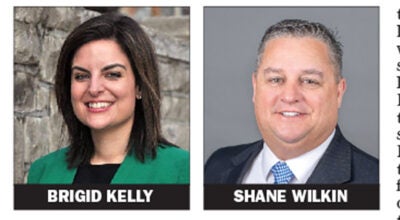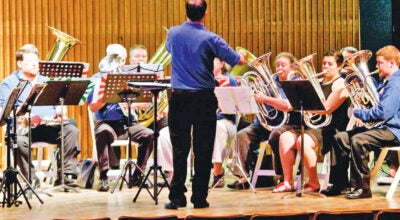Who is going to pay?
Published 12:00 am Sunday, September 30, 2012
Questions slow start of Nixon Hill work
Who is to blame for the Nixon Hill slip and how will the repair project be funded were key questions discussed at Thursday’s Ironton City Council meeting.
Council tabled an ordinance that would have allowed E.L. Robinson Engineering to design a retaining wall near the city’s water system.
What happened?
The National Weather Service said 2011 was the wettest year on record for this area.
Spring storms in particular were blamed for a vast amount of damage, from flooded roads to washed-out bridges. All that rain caused some hillsides to slip. City and county officials are still dealing with it.
A story in The Tribune dated Aug. 23, 2012, put the damage total for the 2011 spring storms at $12 million for Lawrence County as a whole.
Where do we get the money?
The rain caused mud to seep into an underground reservoir that handles city’s water supply. The construction of a retaining wall is proposed to lessen the chances of this happening again.
Councilman Bob Cleary asked that the ordinance be tabled to allow council to seek a legal opinion on how the city can pay for its share of the slip repair.
Mayor Rich Blankenship said recently he hopes to pay for the bulk of the cost with Federal Emergency Management Agency (FEMA) funds.
The city must contribute 12.5 percent of the bill. He plans to use state highway money to pay that share.
Cleary said he did not think state highway funds or money the city receives from vehicle registration could be used as a match for FEMA money to repair the slip because the slip is not on a state or federal highway.
“You can’t use it for Nixon Hill,” Cleary said after he read from the Ohio Revised Code. “You can’t do it.”
Cleary asked for a legal opinion from city solicitor Mack Anderson on the matter.
Blankenship, who did not attend the council meeting, was contacted Friday for his comments on the issue.
Blankenship said he had contacted the state auditor’s office and was told the city can use state highway funds for this purpose.
“I consider this a direct attack on E.L. Robinson and there is no foundation for it,” Blankenship said. “There is no basis for his concern.”
Blankenship also questioned why Cleary waited until the last minute to ask that the matter be tabled.
“We have discussed this at meetings, not just city council meetings but also finance committee meetings, and his questions have never been brought up until now,” Blankenship said.
During Thursday’s council meeting, Cleary also asked what was the total cost of the project. Pat Leighty, E.L. Robinson Director of Projects, replied the total cost of the project was roughly $203,000.
“And how much is E.L. Robinson getting?” Cleary asked. “Just ballpark it.”
“It’s in your ordinance,” Leighty replied. “About $53,000.”
Cleary then asked Leighty, “What do you think caused that slip?”
“The slip has been there for a long time,” Leighty explained. He added the excessive rain in 2011 was a major factor in the landslide.
“If you were aware there was a slip — you had a whole hillside to put that (new) tank— knowing the slip was there, you think it was poorly engineered?” Cleary asked.
E.L. Robinson designed the new tank.
Blankenship said Cleary is confusing two separate things. The underground water storage, built and in use for decades, and the new tank, built approximately four years ago and visible from U.S. 52, are not the same thing. He said the slip in question is halfway down Nixon Hill and threatens only the older, underground tank.
When contacted Friday, Leighty agreed.
“That (new) tank is on rock, part of it is 10 feet underground,” Leighty said.
Blankenship said the fingerpointing is delaying a project that needs to be done before Ironton is hit with another soaking, landslide producing storm.
“I’m not blaming anybody (for the slip),” Blankenship said. “It just needs to be fixed.”





